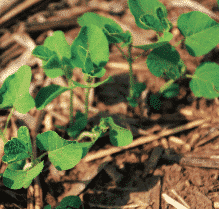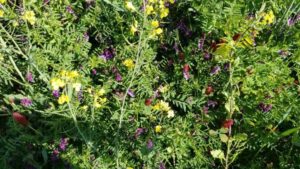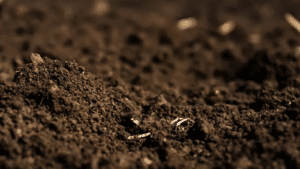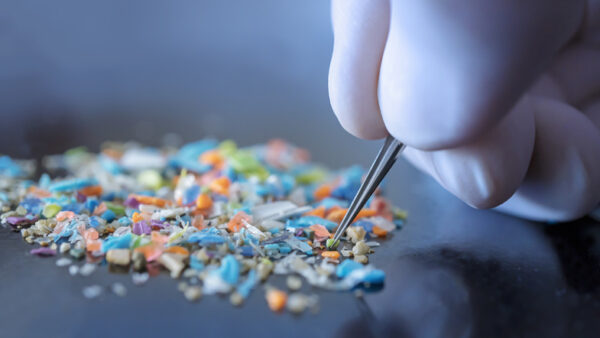We sat down to ask the experts what the relationship between these three are and what you need to know in working with farmers.
In the last issue of Seed World, we highlighted “The Next Revolution,” which many have said will be the result of increased emphasis on soil and root health. It’s even making mainstream news, taking headlines in Politico, National Geographic, the New York Times and Forbes, among others.
So why all the attention? Research shows that the benefits of improving soil health include: improved crop yield, enhanced water quality, increased drought resilience and flood resistance, and decreased greenhouse gas emissions.
As such, both farmers and seed companies are making significant investments in this area with increased on-farm research and scientific advancements in the laboratory that allow researchers to unearth what’s happening below the ground.
Backed by Many
Now in its fourth year, the Soil Health Partnership, which was initiated by the National Corn Growers Association, works to identify, test and measure farm management practices that improve sustainability through soil health. Its goal is to economically quantify the benefits of these practices, showing farmers how healthy soil benefits their bottom line. At the 2017 Commodity Classic, the partnership announced that it would expand to work with 100 farms this year.
Efforts such as the Soil Health Partnership have spurred other groups to coalesce, one of which is the Midwest Row Crop Collaborative. This is a group of leading food and agriculture supply chain companies and conservation organizations — including the likes of Cargill, General Mills, Kellogg’s, McDonalds, Monsanto, Walmart and the Environmental Defense Fund — that have formed an end-to-end partnership to support farmers in the improvement of soil health.
Then there’s the Soil Health Institute, backed by the Samuel Roberts Noble Foundation and founded in 2013. It’s designed to spearhead accurate, science-based information, create a sense of urgency and coordinate leadership about soil health.
While these are relatively new initiatives, there’s a host of long-time soil health promoters, such as USDA’s Natural Resources Conservation Service, the Conservation Technology Information Center (CTIC), and Sustainable Agriculture Research and Education (SARE).
Two practices supported by the organizations listed above for improving soil health are no-till farming and the planting of cover crops. There’s a segment of farmers who have been doing these practices for a number of years but there’s a whole lot more who are trying them for the first time or are keeping their eye on what their neighbors do and their results.
In fact, CTIC in partnership with SARE, Purdue University and the American Seed Trade Association recently released results from the 2017 Cover Crop Survey Analysis. The survey, which had 2,012 respondents, showed that the number of acres planted in cover crops has nearly doubled in the past five years.
“In this year’s survey, farmers said they committed an average of 400 acres each to cover crops in 2016, up from 217 acres per farm in 2012. They expected to increase their cover crop planting in 2017 to an average of 451 acres,” reports CTIC.
Of the farmers surveyed, 88 percent reported planting cover crops. Those that planted cover crops say: corn yields increased an average of 2.3 bushels per acre, soybeans yields increased 2.1 bushels per acre and wheat yields increased 1.9 bushels per acre.
“Among cover crop users, we are seeing great enthusiasm for the soil health benefits … with a widespread appreciation for the long-term benefits,” says Chad Watts, CTIC executive director. “We’re also seeing openness to practices like inter-seeding and planting green, which raises cover crop use to the next level in terms of creating new options for species and seed mixes, and new opportunities to get even greater benefits from their covers.
No-till
While no-till isn’t in the spot-light near as much as cover crops these days, it’s another method farmers are adopting to help improve the soil health on their farms. The last Census of Agriculture, conducted in 2012, showed that of the 279 million acres of tillable cropland in the United States, 96 million acres were no-till.
“By leaving the soil mostly undisturbed and leaving high levels of crop residue behind, soil erosion is almost eliminated,” says Nicholas Staropoli, associate director of the Genetic Literacy Project and director of the Epigenetics Literacy Project. “The utilization of crop residues in no-till farming also drastically increases water infiltration and therefore retention by the soil. This means there is less runoff of contaminated water, as well as a reduction in the amount of watering necessary for a given crop.”
Staropoli adds that some estimates suggest crop residues provide as much as 2 inches of additional water to crops in late summer.
It’s also documented that no-till farmed soils have a water penetration rate of
5.6 inches per hour, twice as much as for conventionally tilled land.
The list of benefits of no-till and cover crops could go on, but these benefits also come with their share of challenges for farmers.
Obstacles to Overcome

Soils need to be around 50 degrees Fahrenheit for corn seed to begin germinating, and that number jumps to about 60 degrees for soybeans, Ireland says.
“This means farmers who use no-till and cover crops generally plant a little later than those who don’t deploy these practices,” Ireland says. “That’s typically not an issue, unless we get into a touch-and-go season where things get backed up.”
These colder, wetter and undisturbed soils, with increased residues on top, are havens for disease and insects — just waiting for the seed to be put in the ground.
According to the University of Missouri’s Einar Palm, an Extension plant pathologist, “A critical factor affecting the extent and severity of diseases is the survival of disease-causing organisms in crop residues.”
The situation is even more challenging if a farmer is planting corn-on-corn in a no-till environment and/or is using cover.
“When a crop is grown continuously, certain fungi and bacteria increase and intensify in crop residues,” Palm explains. “For example bacterial blight, anthracnose, brown spot, charcoal rot, downy mildew, pod and stem blight, purple seed strain and others affecting soybeans become more serious in continuous soybeans and when residues are not covered.”
Both Ireland and Palm agree that using high quality seed treated with a fungicide will help protect the seed against diseases.
BASF conducted field trials throughout the U.S. during the 2006 and 2007 growing seasons. These trials confirm stand and yield improvements with Stamina in corn when compared to other standard seed treatments, says Justin Clark, BASF technical marketing manager for seed treatments.
“Seed and seedlings are better protected by Stamina from key diseases, such as Rhizoctonia,” he says. “This is particularly important as earlier planting and increased use
of no-till production systems may lead to slower emergence of seedlings due to cool, wet soils.
“During four years of greenhouse and growth chamber studies by BASF, the seeds treated with Stamina showed increased germination and more rapid emergence compared to untreated checks under certain cold conditions.”
Just as there’s increased disease pressure, there’s also increased insect pressure.
Waiting in the Trenches With any reduced tillage system, cutworms, seed corn maggots and seed corn beetles can be more frequent, says George Thomas, a University of Missouri entomologist.
He says armyworms cause damage when corn is 6 to 9 inches or more in height, and that European corn borer pressure may increase where stalks remain on the soil surface for several consecutive seasons.
“There is no one best control measure for all situations for all soil insects,” Thomas explains. “Scouting, or anticipating where insects might be a problem, is important.
“The value of seed treatment insecticides increases as the number of tillage operations decreases.”
For Ireland, Phythium, Fusarium and Rhizoctonia, as well as white grub and seed corn maggot, are of particular concern.
The Order
“Virtually anyone who buys hybrid corn doesn’t get a choice on the fungicide package; it’s automatically included at a set rate,” Ireland explains. “These days, an insecticide is generally included, and depending on the pressures, growers and agronomists can ask to increase the rates if planting into no-till soils or cover crops.”
However, he says it’s a slightly different story for those planting soybeans as farmers have more choices regarding their seed treatment package.
For farmers planting soybeans into corn or cover crop residue, Ireland recommends picking the best fungicide and insecticide package possible to protect that investment.
Additional Advice Another strategy to help overcome the challenges associated with no-till and cover crops is making sure farmers get proper seed-to-soil contact and at the proper depth.
“This makes a big difference when it comes to stand establishment,” says Daryl Buchholz, a University of Missouri agronomist.
However, he says that can be a challenge, too, regardless of the type of press wheel being used.
Buchholz advises farmers to add weight (about 400 pounds) or spring down-pressure. He also says driving slower will help get the soil back in contact with the seed.
Farmers who have been long-time students of man-aging no-till and cover crop systems are among the first to adopt new seed treatment technology, says one
“No-tillers should be and are among the first to adopt new seed treatment technology,” according to No-Till Magazine. “They realize they’re planting into a challenging environment and with the value of seed, it’s not economically viable to compensate for difficult conditions by overseeding.”
To learn more about the relationship between no-till, cover crops and seed treatments, mark your calendar for Oct. 19 and plan to join us for a Strategy webinar at 1 p.m. Eastern/12 p.m. Central. There is no cost to participate. Register today at SeedWorld.com/webinar.













